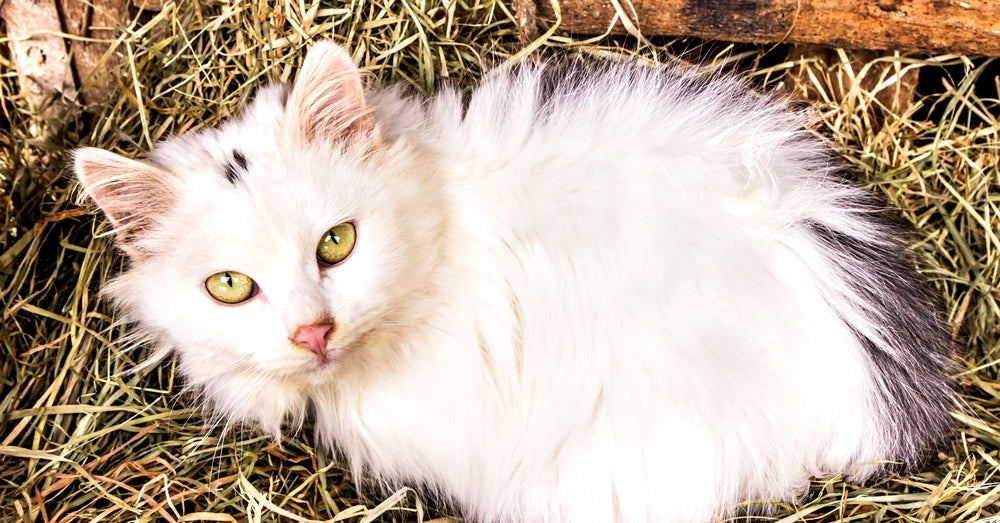7 Ways To Convince Feral Cats to Take Shelter
Shopify API
First, thank you to anyone out there who's taken the time to build a feral cat shelter. Protection from the elements is vital, especially during the cold months, and your thoughtfulness will no doubt save many lives during the winter.
For those who haven't yet constructed a shelter for your local feral colony? Check out this quick video. It's a straightforward, affordable approach suited for even the most novice of builders.
[media height="270" width="480" provider="youtube" type="iframe" src="https://www.youtube.com/embed/lpW69fNzcjc?feature=oembed" ad="true"]
7 Ways to Convince Cats to Take Shelter
Now, for those who are ready to outfit their finished shelter, you're probably wondering how you go about convincing feral cats that it's safe to enter.
 Feral cats need your help all year long.
Feral cats need your help all year long.7. Use a Discreet Location
Let's talk placement. You'll want to situate your shelter with the front facing away from the wind, rain, and snow. A discreet location is an ideal for keeping the cats safe and any neighbors who might not be in favor of ferals happy.
"A protected feeding station can make all the difference in areas that receive large amounts of snow," reports the Animal Rescue League of Iowa. "Just like with the instant shelter, make sure you clear snow away from protected feeding stations to ensure all cats can reach the food without issue."
- If dogs are a threat, put the shelter behind a fence dogs cannot get through.
- Face the entrance toward a wall so only cats can get in and out.
- Place the shelter out of sight.
 Practice Trap Neuter Release (TNR) strategies whenever possible.
Practice Trap Neuter Release (TNR) strategies whenever possible.6. Elevate the Shelter
Don't put the structure directly on the ground. Doing so makes it colder and an easier target for curious wildlife. So elevate it a good four to six inches using discarded pallets or bricks.
Elevating the shelter just a few inches off the ground:
- Stops rain from splashing up through the door.
- Reduces snow buildup that could trap cats.
 Young feral cats have little hope for survival without shelter.
Young feral cats have little hope for survival without shelter.5. Camouflage
Camouflaging your shelter is key. The less attention it attracts, the better. Earth tones are a great paint choice.
According to Feral Cat Focus, "Shelters should blend in with their surroundings so that they are not obtrusive to neighbors. Cover them with leaves or other brush or paint them a dark color."
 Feral cats need shelter from the elements in the winter.
Feral cats need shelter from the elements in the winter.4. Use Straw Instead of Hay
Layer a healthy amount of straw across the interior floor of the shelter. And make sure you're using straw, not hay! Hay molds when it gets wet, while straw resists the elements and remains a viable, cozy bedding material.
 A feral cat shelter could help animals in your neighborhood.
A feral cat shelter could help animals in your neighborhood.3. Avoid Blankets
Though you may be tempted to leave a warm blanked outside for any feral visitors, it's actually not the best idea.
According to Alley Cat Advocates, "Blankets, towels, flat newspapers, etc., retain wetness and should not be used. They absorb body heat and will actually make the cat colder."
2. Make A Small Opening
Finally, keep the opening to the shelter no bigger than six to eight inches wide in order to deter predators.
Feral Cat Focus recommends the following:
- The pet shelter should have two entrances so that predators and bully cats can’t easily trap them
- Each entrance should have a flap or protected entryway to protect from predators and the elements. Otherwise make sure the door faces away from prevailing winds or faces a wall.
Do these things and the feral cats will come in and take shelter! Maybe not in droves to begin with, but remember, patience is key. Before you know it, your shelter will show signs of use and that's a guaranteed warm, fuzzy feeling.
 A good feral cat shelter is discrete, protected, and warm.
A good feral cat shelter is discrete, protected, and warm.1. Consider a Feeding Station
Now you may be thinking to yourself: what about food? The experts agree that food should not be placed inside the cat shelter. Though it's attractive to the cats, it's irresistible to wild animals who'd happily interrupt someone else's nap in order to raid the pantry. Instead, construct a feeding station for both food and water. It's even more simple than building your shelter and takes less time. Learn how!
[media height="270" width="480" provider="youtube" type="iframe" src="https://www.youtube.com/embed/zRRAs6JITSY?feature=oembed"]

